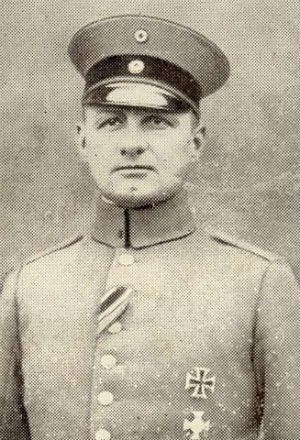ZEPPELINS, GOTHAS & 'GIANTS'
THE STORY OF BRITAIN'S FORGOTTEN BLITZ 1914-1918
7/8 Sept. 1915
Bombed:
London, Suffolk & Herts.
German Army airships returned on the night of 7th September, when three – including one of the wooden-framed Schütte-Lanz airships - attempted to strike against London.
Zeppelin LZ 77, commanded by Hauptmann Alfred Horn, came in over Clacton at about 10.40pm but failed to strike at the capital. Instead she meandered, apparently aimlessly, around Essex and Suffolk until 1.30am when she dropped an incendiary bomb on Monks Soham, west of Framlingham, which landed in a field at Church Farm but failed to ignite. About ten minutes later a high explosive (HE) bomb fell in a wheat stubble field at Pound Farm, Framlingham. The bomb buried itself three feet in the ground but failed to explode. The next bomb – an incendiary – landed at Great Glemham, amongst buildings on Home Farm owned by the Earl of Cranbrook, destroying a reaper/binding machine with a value of £7. The final three bombs – all incendiaries - landed in fields at the village of Benhall, south of Saxmundham, two at Old Lodge Farm and one at Green Farm. LZ 77 then continued up the Suffolk coast before finally departing over Lowestoft at about 2.20am.
Schütte-Lanz 2 (SL 2) came inland at the mouth of the River Crouch at about 10.50pm. Tracing a path over Essex towards London, she reached Leytonstone at about 11.40pm where her commander, Hauptmann Richard von Wobeser, turned south. Following the River Lea to the docks on the Isle of Dogs, he dropped seven incendiary and one HE bomb there at about 11.45pm. The HE bomb completely destroyed 8, 9 and 10 Gaverick Street, off West Ferry Road, and injured 11 people. Moments later an incendiary fell on the John Evelyn, a sailing barge moored at Snowden’s Wharf, close to the entrance to Millwall Docks. The master and mate of the barge suffered horrific burns and both died in hospital a few days later.
Crossing the Thames, SL 2 dropped further bombs across south-east London. In Deptford, at 34 Hughes Fields, one of these tragically killed five members of the Beechey family; the surviving child was taken in by Dr. Barnado's. Further bombs fell in Greenwich but caused only minor damage, including one that fell close to the Royal Observatory. The final bomb dropped in Kingsman Street, Woolwich, where flying glass injured three people. At 11.54pm, a 6-pdr gun at Woolwich Arsenal fired three rounds at SL.2, and the 13-pdr across the Thames at Royal Albert Dock fired once, all without effect.
Official reports state that SL 2 then turned back west and, coming over Bermondsey, commenced a second bombing run. A close inspection of all the reports, however, suggests SL 2 departed and another Zeppelin, LZ 74, appeared over south-east London.
Hauptmann Alfred Horn, commander of Army Zeppelin LZ 77
Courtesy of www.frontflieger.de
At 11.55pm, while the Woolwich guns engaged SL 2, the Waltham Abbey guns fired three rounds at LZ 74, commanded by Hauptmann Friedrich George. Believing he was over Leyton, and wishing to lighten his ship, George released 45 bombs while he was actually over Cheshunt. No casualties occurred, although they inflicted damage to 13 buildings, smashed numerous windows, broke a section of railway track and wrecked a great number of greenhouses at the market gardens and nurseries in the locality.
Following the River Lea southwards towards London, LZ 74 appeared over the City and, with 33 bombs still on board, dropped a sighting incendiary bomb that fell close to Fenchurch Street station, before crossing the Thames. Passing close to the Surrey Docks, bombs dropped in Keetons Road, Bermondsey and a HE bomb landed on 181 Ilderton Road, Rotherhithe, killing six and injuring five. Another bomb injured three in Sharratt Street before a HE bomb that fell on 32 Childeric Road, Deptford, killed three members of the Suckling family and injured three of the Pain family. Seconds later, another HE bomb dropped on 66 Clifton Hill, killing Frederick and Emma Dann and injuring Janet, their 16-year-old daughter, as well as 73-year-old Tamer Marchant. Hauptmann George then steered LZ 74 southwards until he reached Bromley, then he turned, passing close to Chislehurst before heading back to the coast, crossing the Thames at Purfleet at about 12.55am where she briefly came under anti-aircraft fire. When LZ 74 reached Belgium, Hauptmann George recorded receiving two minor hits on LZ 74.
Misty weather on the east coast meant only two RNAS aircraft took to the sky to oppose the raid - from Yarmouth and Felixstowe - these only getting airborne at 2.15am and 2.30am respectively, as both SL 2 and LZ 74 headed homewards. Flight commander R.J. Hope Vere escaped injury when the BE2c he flew from Felixstowe crash landed near Trimley in Suffolk, after engine failure forced him down.
German propaganda postcard showing Zeppelin raid on London docks
Casualties: 18 killed, 38 injured
Damage: £9,616
Follow Us
© Ian Castle 2021

